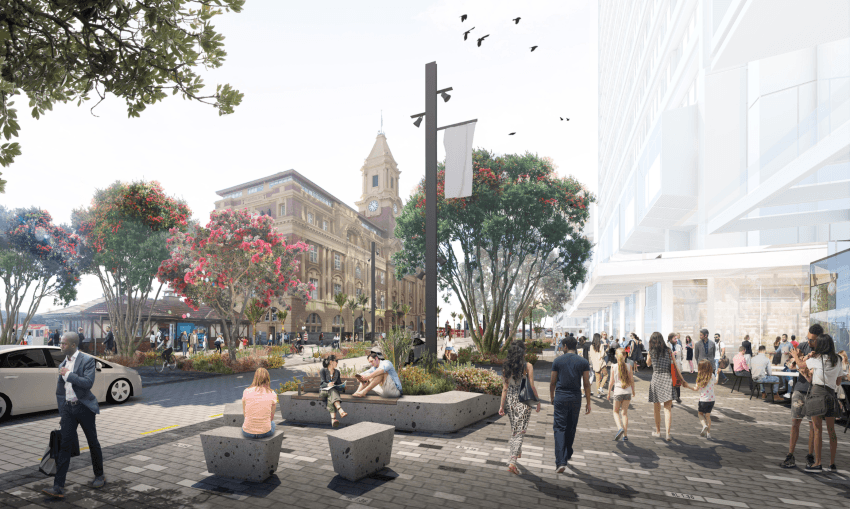While it sounds like something a movie bad guy might hatch, Auckland Council’s updated ‘Masterplan’ to make the city centre liveable isn’t too villainous, unless you think road cones are evil.
What’s the plan?
It’s not so much a plan as a vision of how Auckland might look in 20 years. Under the City Centre Masterplan, adopted by council on Thursday, various areas of the CBD will be rebuilt to make them more accessible – in some cases exclusively so – for walkers, cyclists, public transport and freight. Cars are definitely not favoured in the plan, as the council wants to achieve its goal of a zero-emission zone in a more green and liveable city centre by 2030.
While the Masterplan as a whole was conceived in 2012 and encompasses greater Auckland, the city centre part has been refreshed somewhat to focus on three key areas:
- The pedestrian-friendly concept called Access for Everyone (excluding car drivers).
- Māori Outcomes which will include more history and aspirations of Mana Whenua, presumably factored into the construction and design of new spaces.
- Grafton Gully Boulevard: Grand visions for that rust-belt area east of the CBD.
What will it involve?
Auckland Council loves applying hard-to-measure terms to its construction projects. If the very conspicuous Quay St project is an “enhancement”, then the Masterplan – called a “transformation” in the plans – should at the very least involve an overwhelming amount of road cones, high-vis jackets and deep holes in the ground.
Auckland Council’s media spokesperson said nothing had yet been undertaken, but the plan will almost certainly involve detailed resources consent applications and multiple rounds of public consultation.
Where will the transformation take place?
A diagram of the plan’s Access for Everyone concept essentially shows Waihorotiu Queen Street valley – the area from the town hall down to the waterfront – as being a “pedestrian friendly” zone where cars are ostensibly excluded.
Nine peripheral areas of the CBD including Victoria Park, K Road and the universities have been designated as “traffic zones” – neighbourhoods which will handle the bulk of the cars while preserving city centre access to emergency, freight and rubbish vehicles. The council has not said how it intends to regulate traffic through the area and whether this will involve construction or a virtual no-drive zone.
The other key spot specified is the weird borderlands area by the train tracks near the end of State Highway 16. The council wants to create “a tree-lined multi-way boulevard to improve connections and access to the port area and eastern suburbs.” According to the Council, this will trace along SH16 to Tamaki Drive and could include different lanes to separate local traffic and freight.
Will it affect businesses?
Most likely. Like other civic initiatives carried out by Auckland Council and its renegade cousin Auckland Transport, such an ambitious plan is certain to involve many stakeholders who could be impacted from the lost business during “transformation”. On the other hand they could also benefit immensely from the extra foot traffic once the vision comes into focus.
Who supports it?
Over 500 pieces of public feedback received late last year showed that over three quarters (76%) of participants supported the proposed general direction of the plan with the rapid public transport and pedestrian focus being the most popular aspects.
Of the neutral or negative feedback 10% did not support it mostly because of potential costs – estimated at $130m – a desire to focus on other areas of Auckland rather than the city centre, and a sneaking suspicion that the plan “under-emphasised” vehicular access.
There was relatively less support (58%) for Māori Outcomes and 15% who did not support this initiative at all.
The Auckland Council Planning Committee has agreed to the plans on the back of the feedback received. Both Planning Committee chair Chris Darby and the mayor have endorsed the vision.
